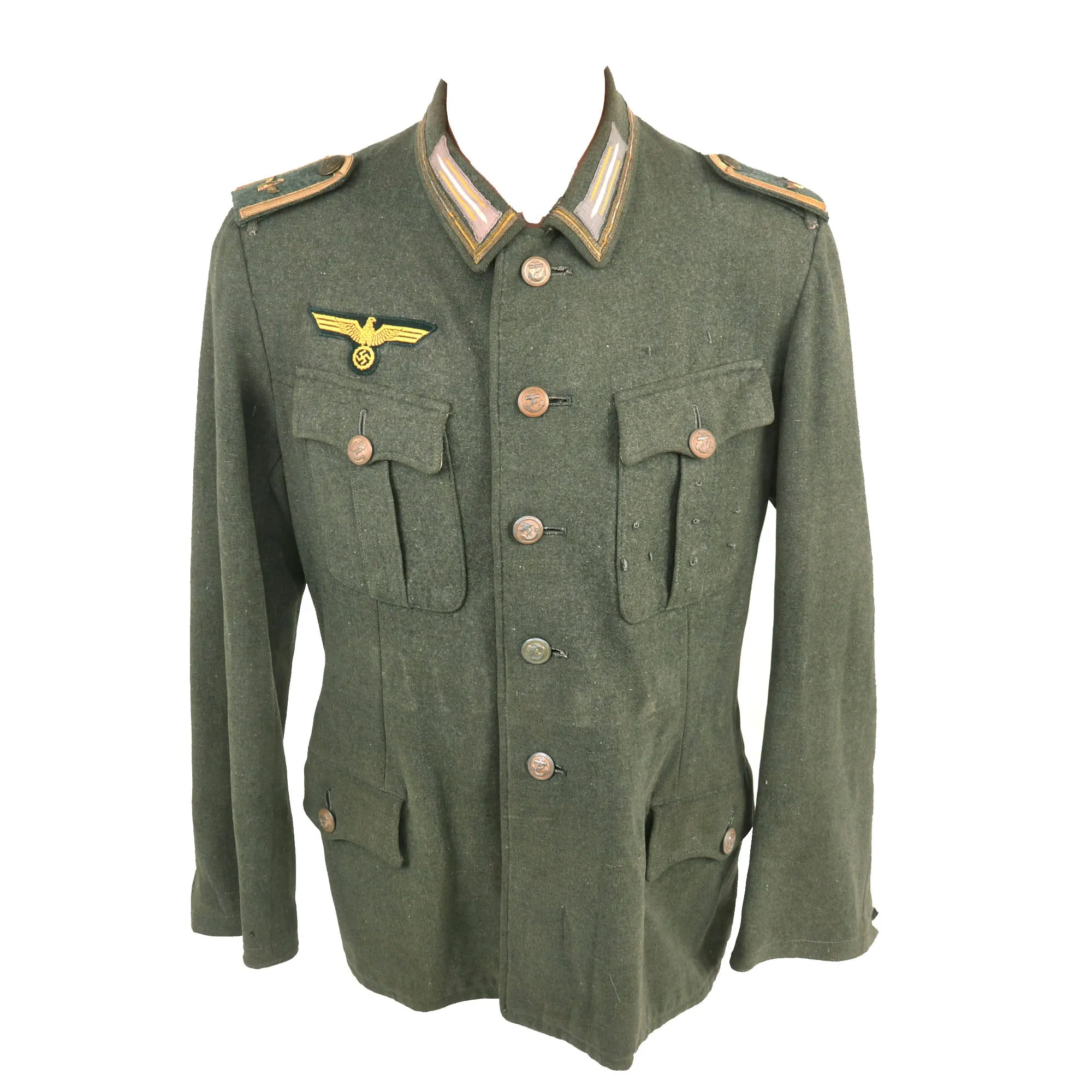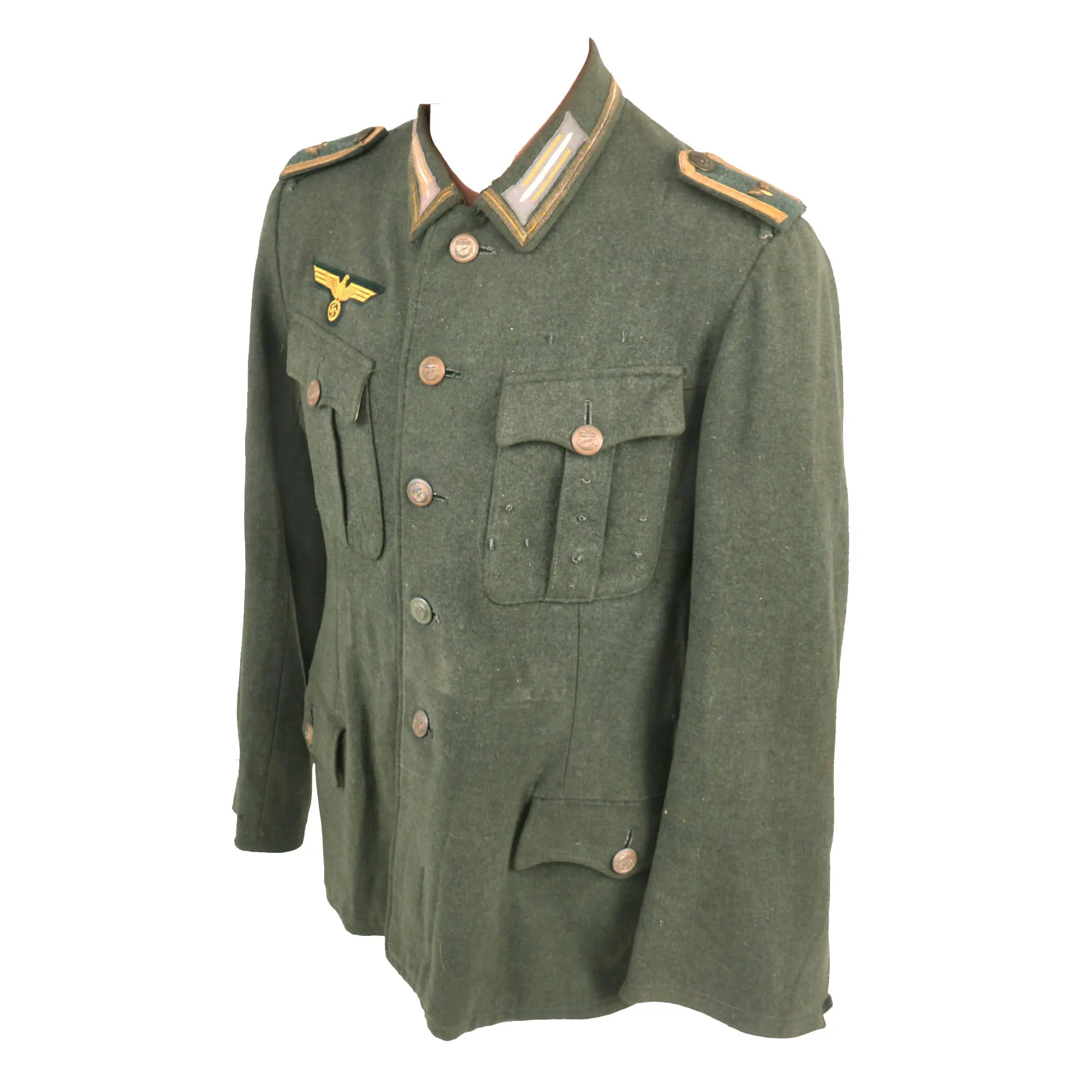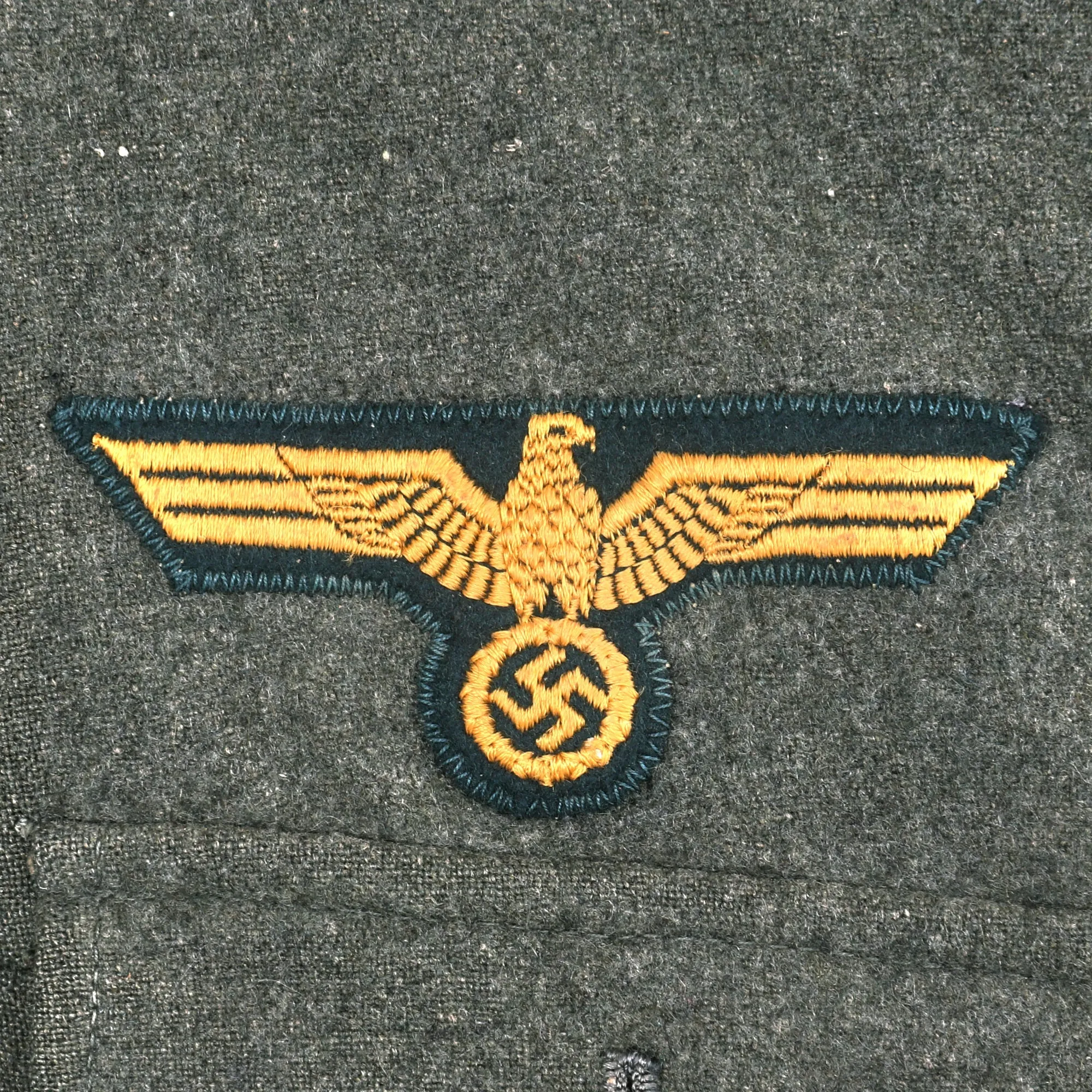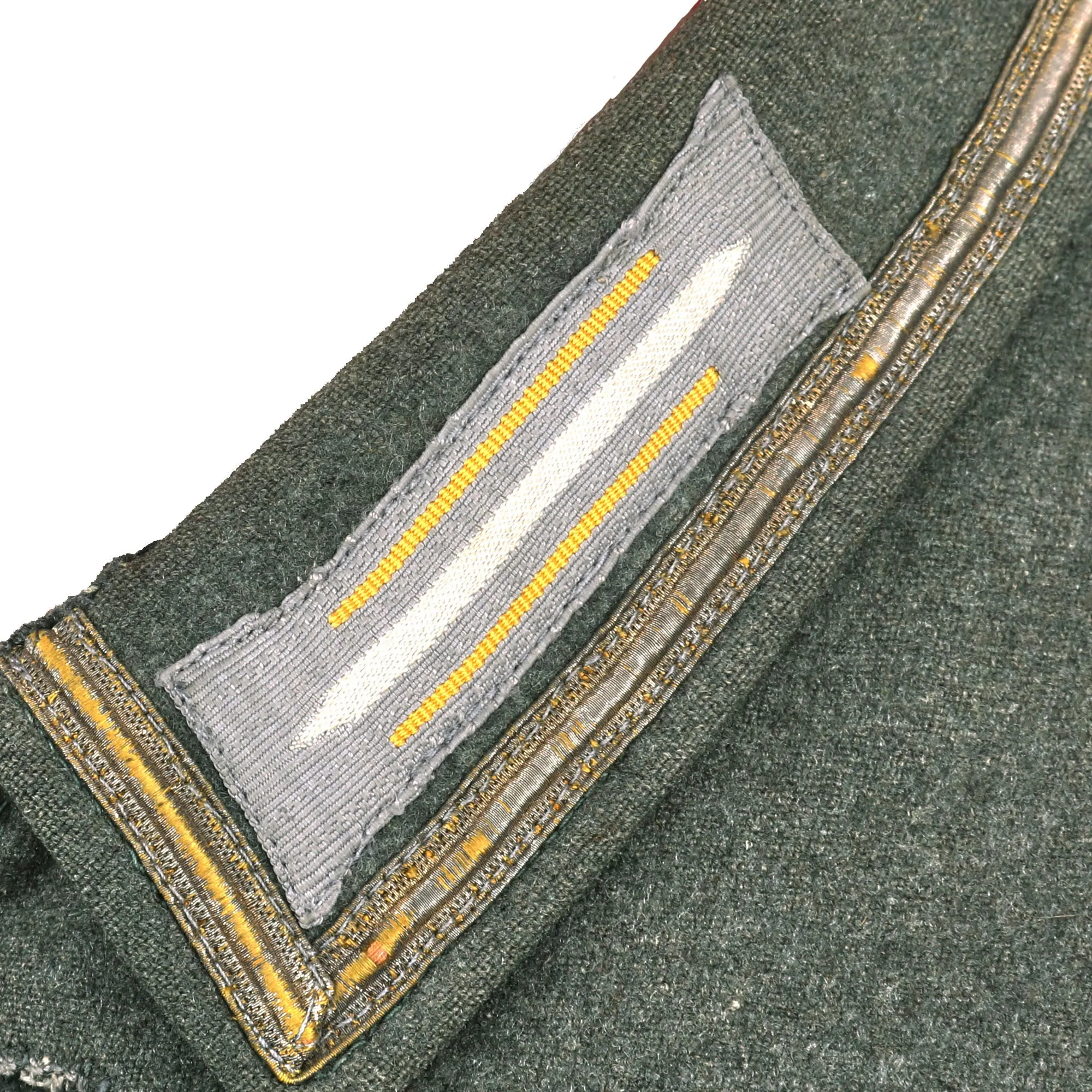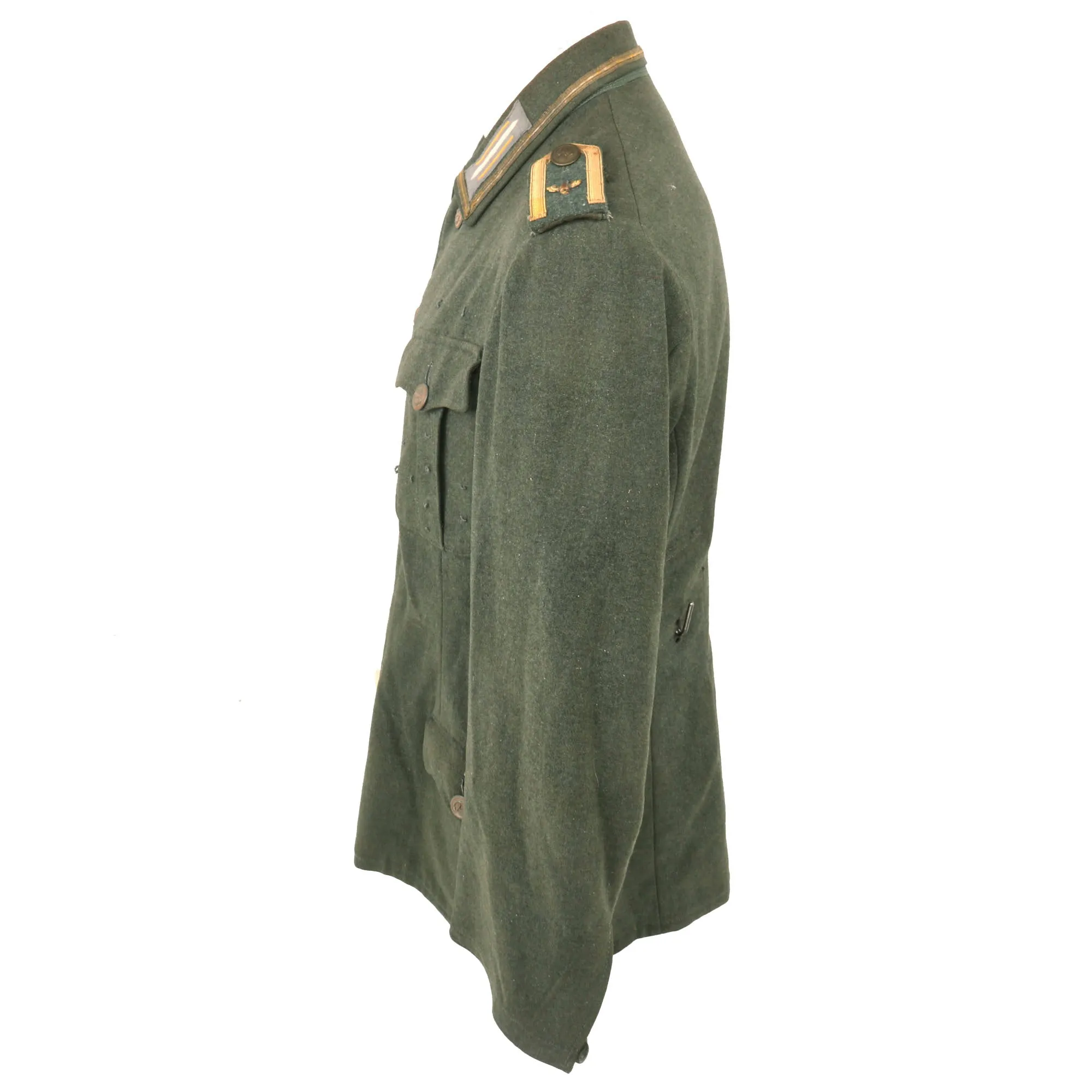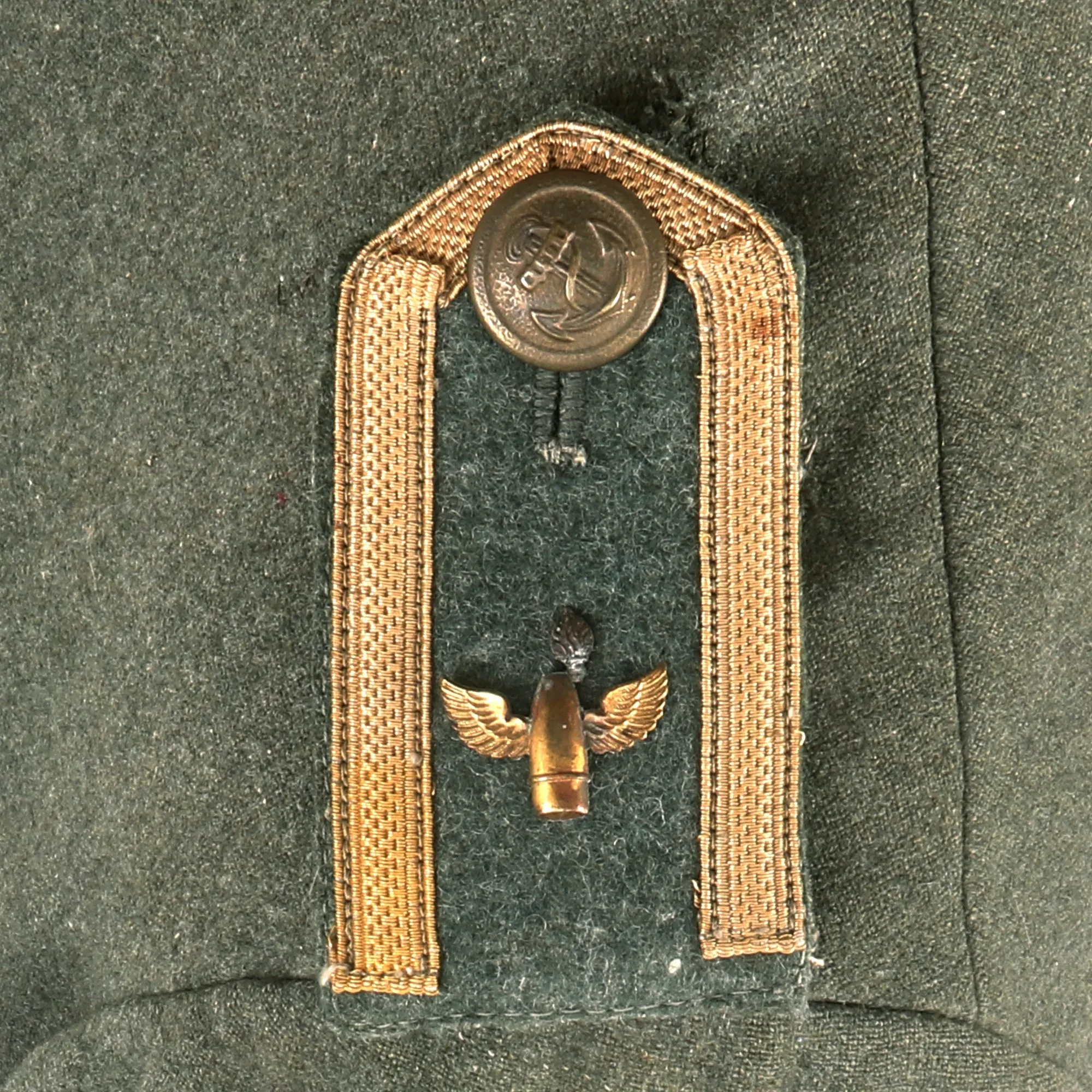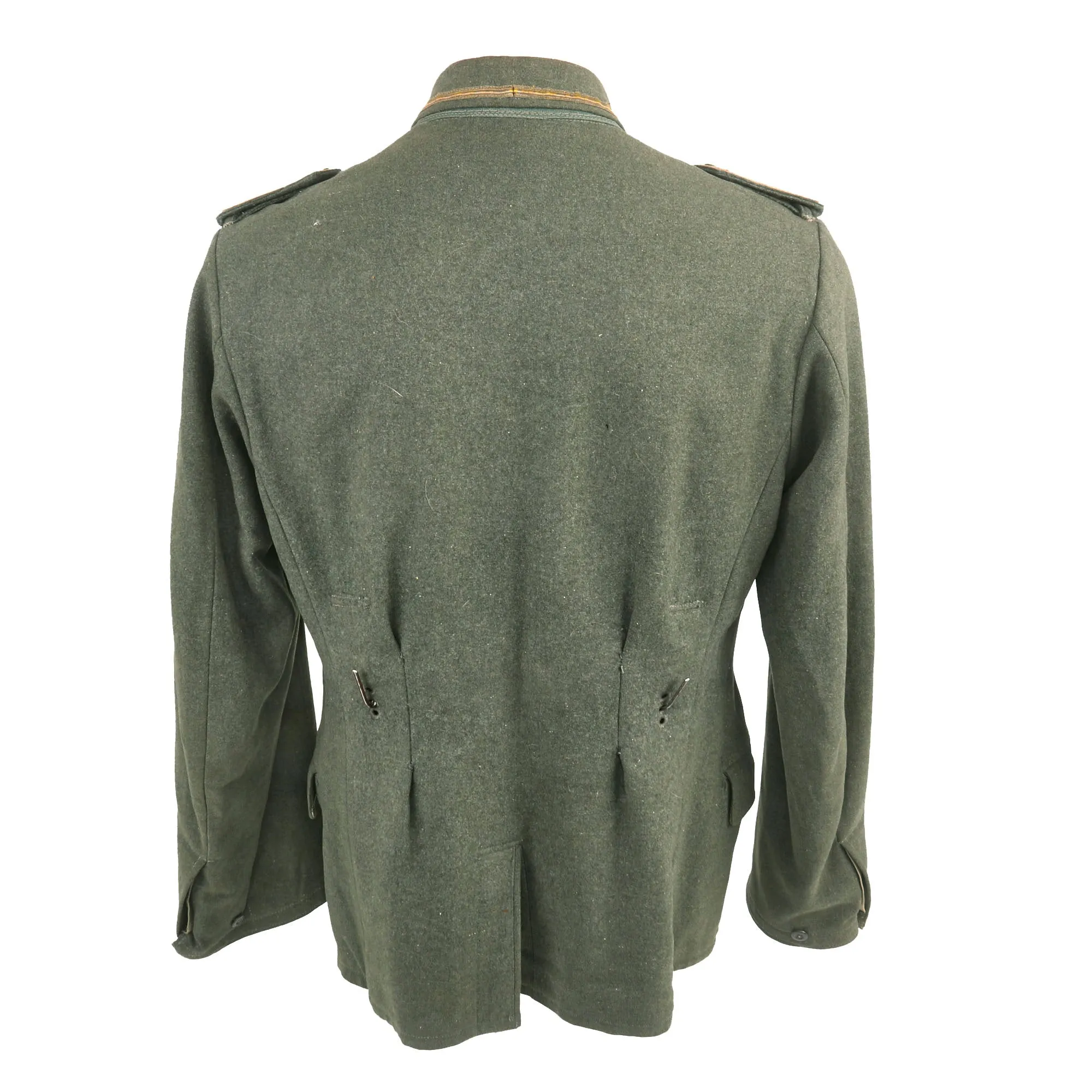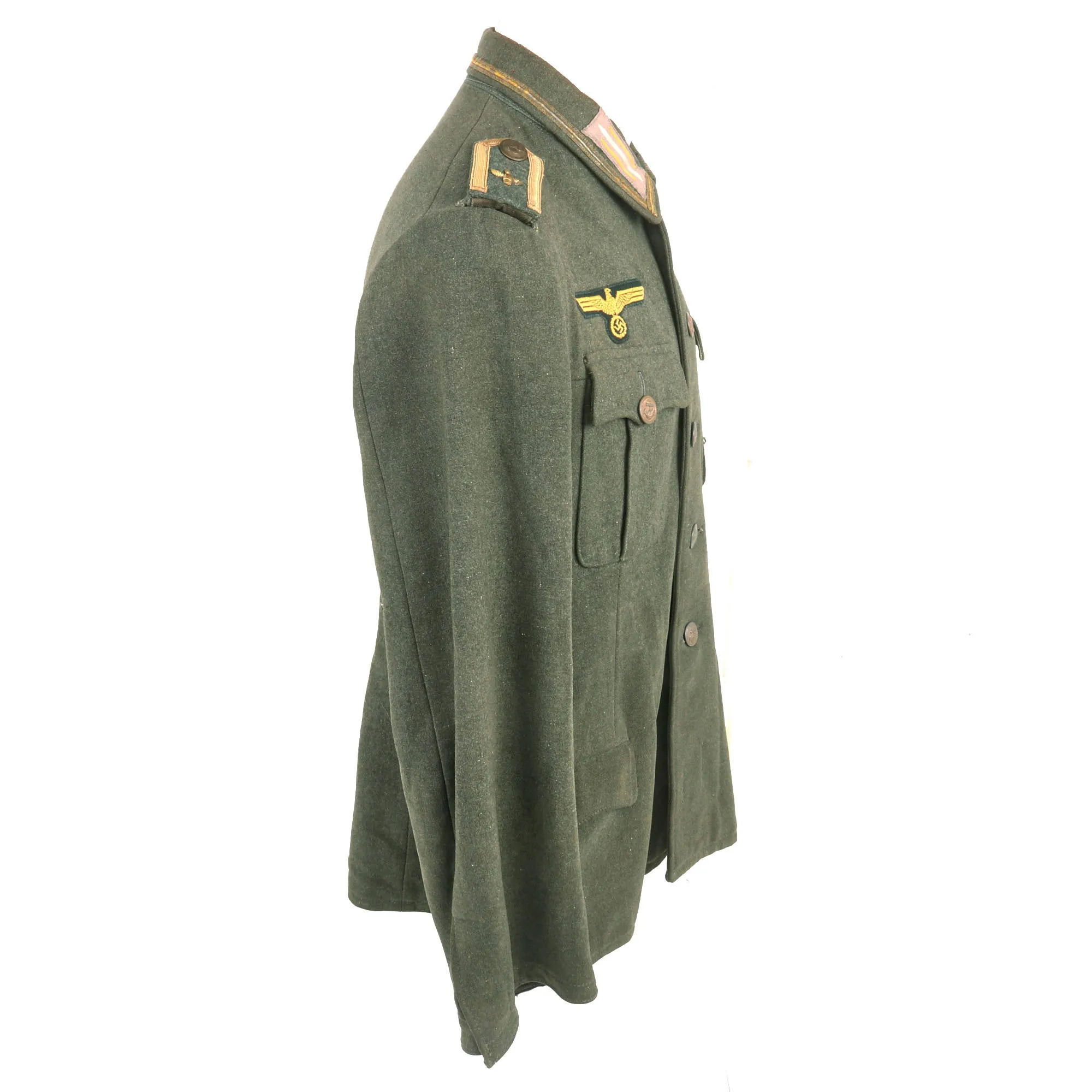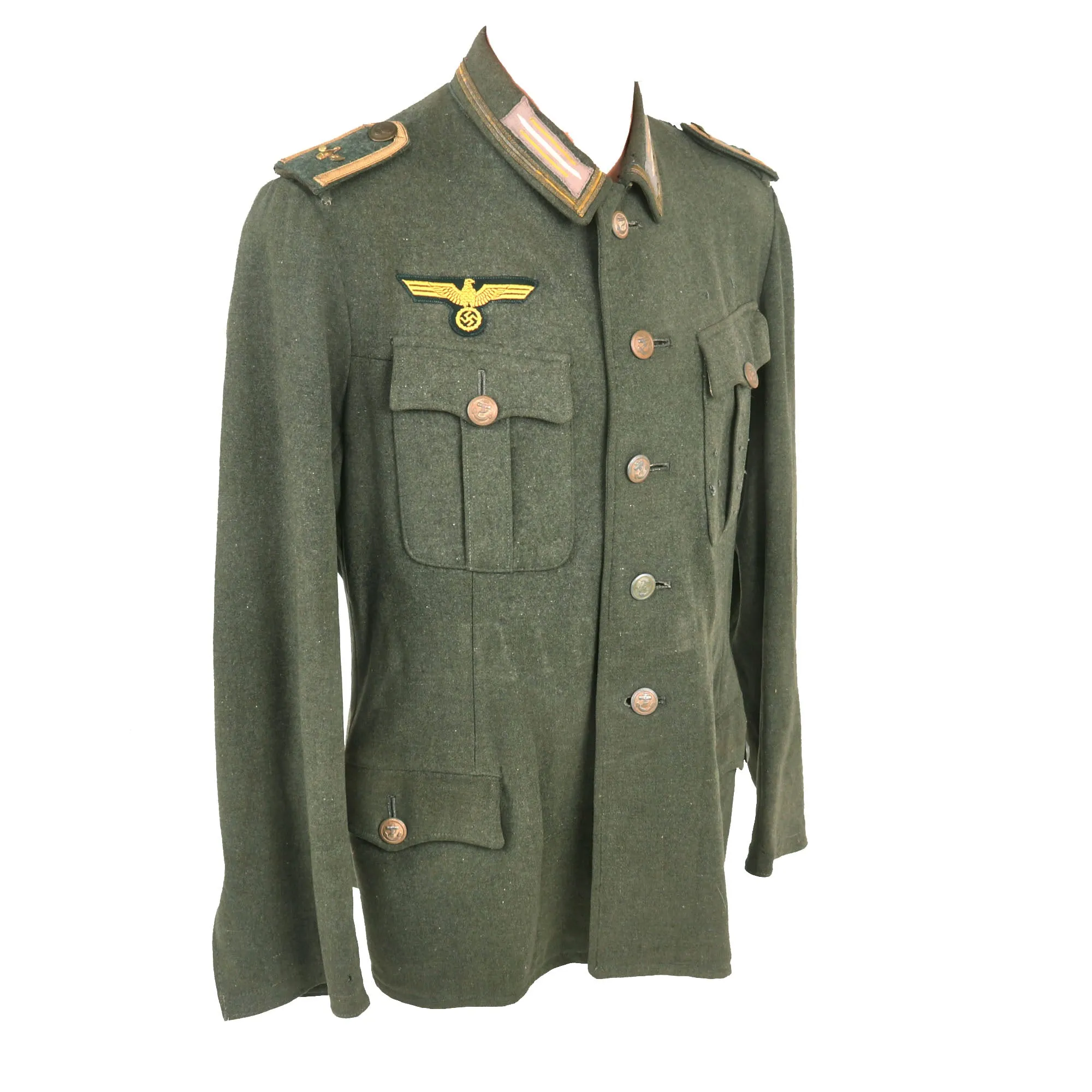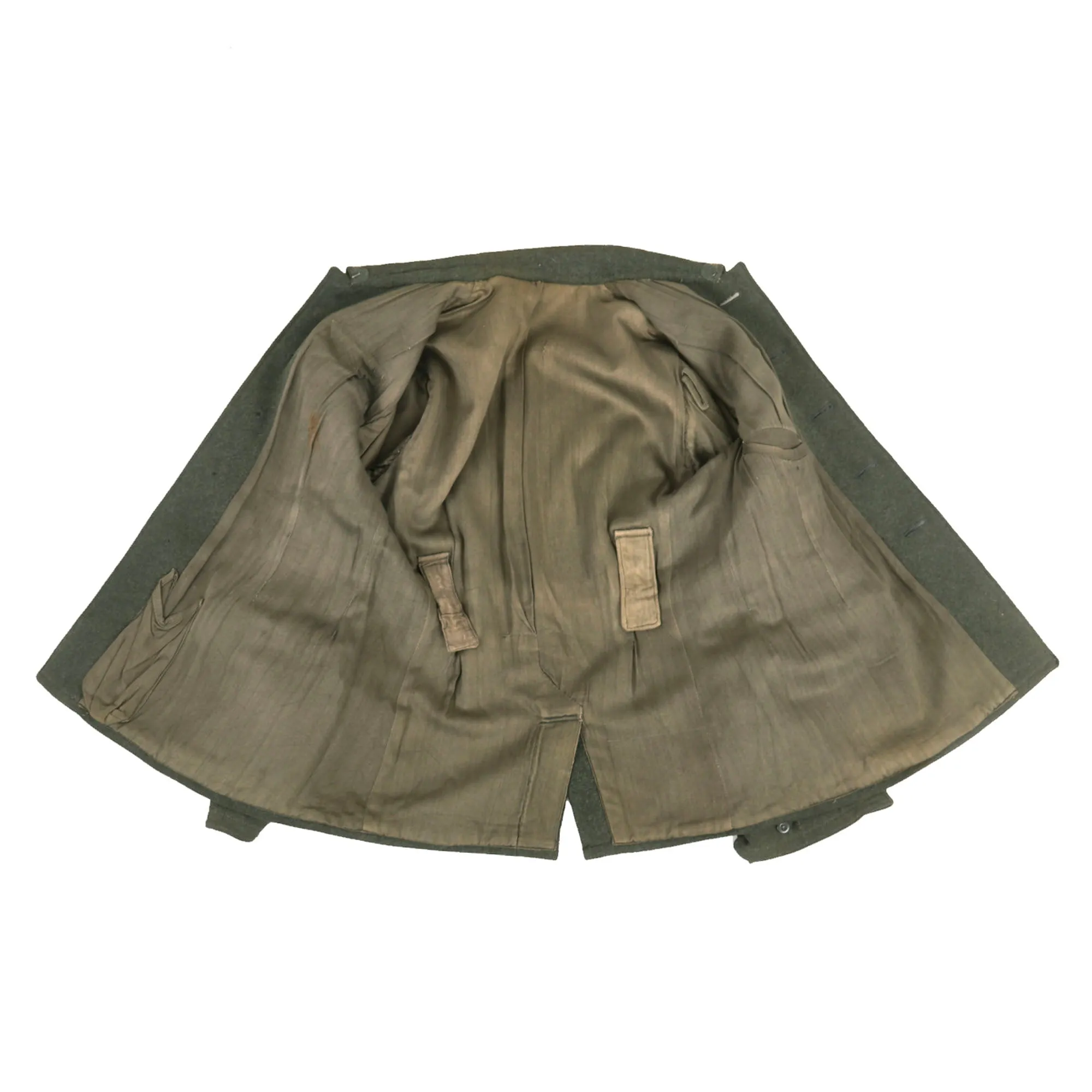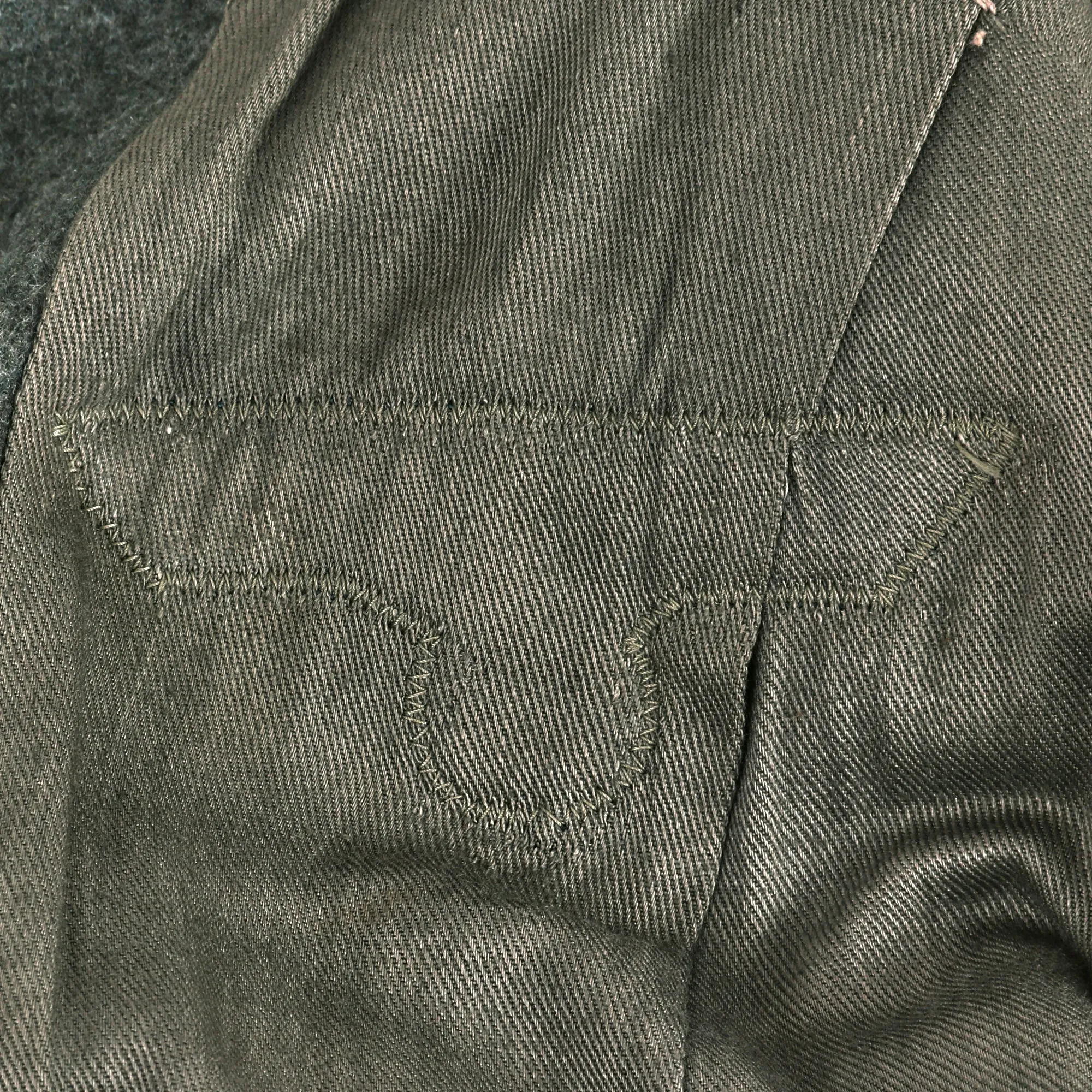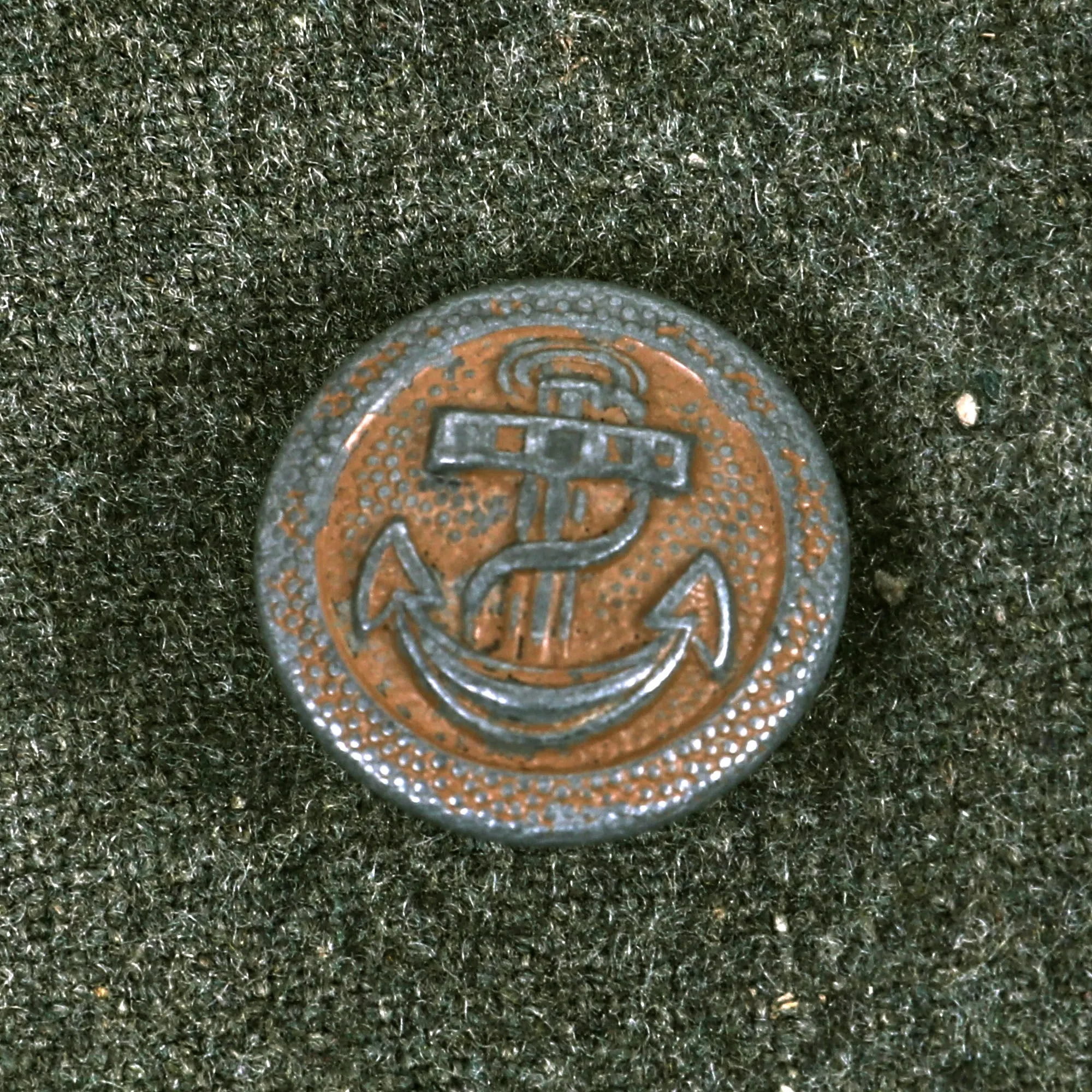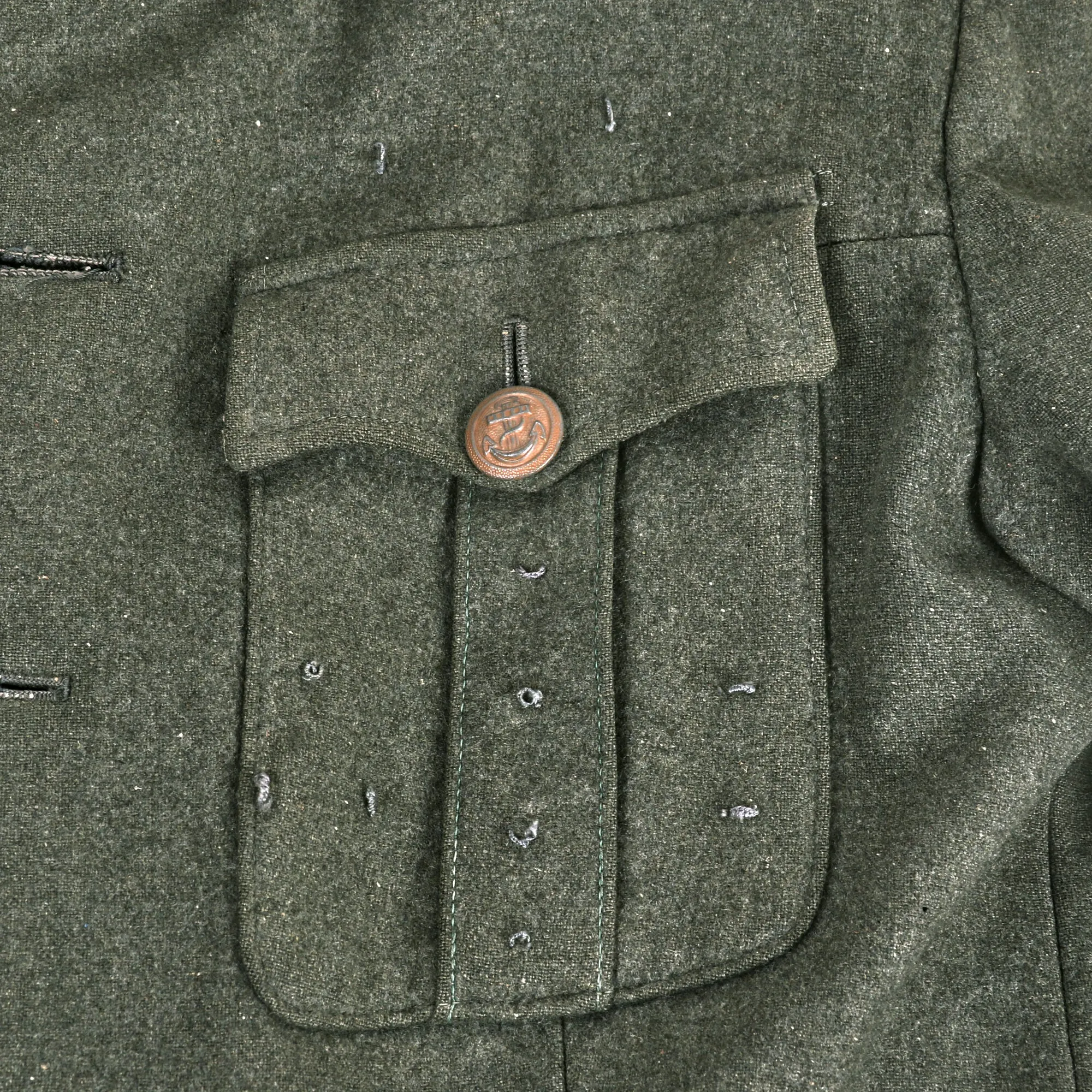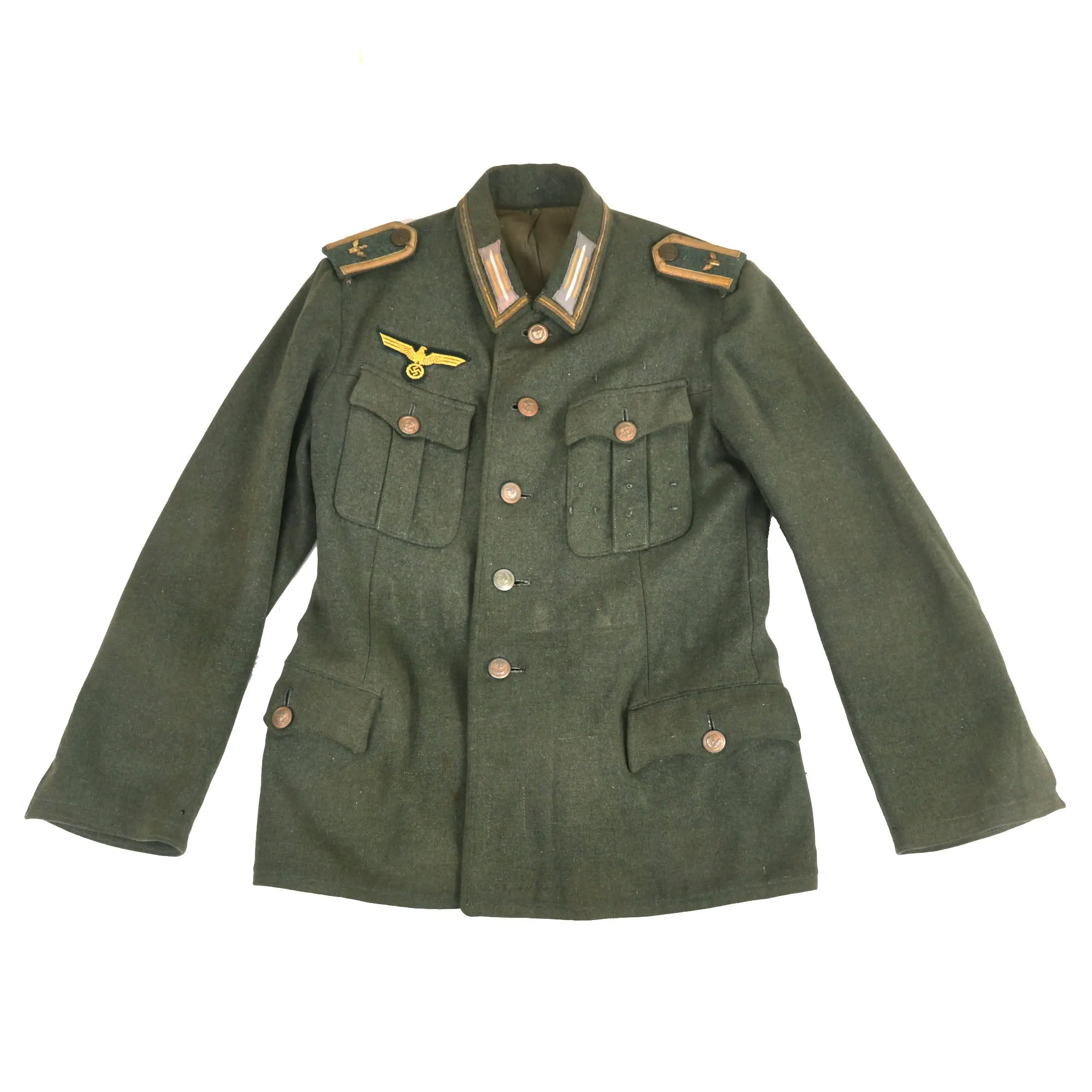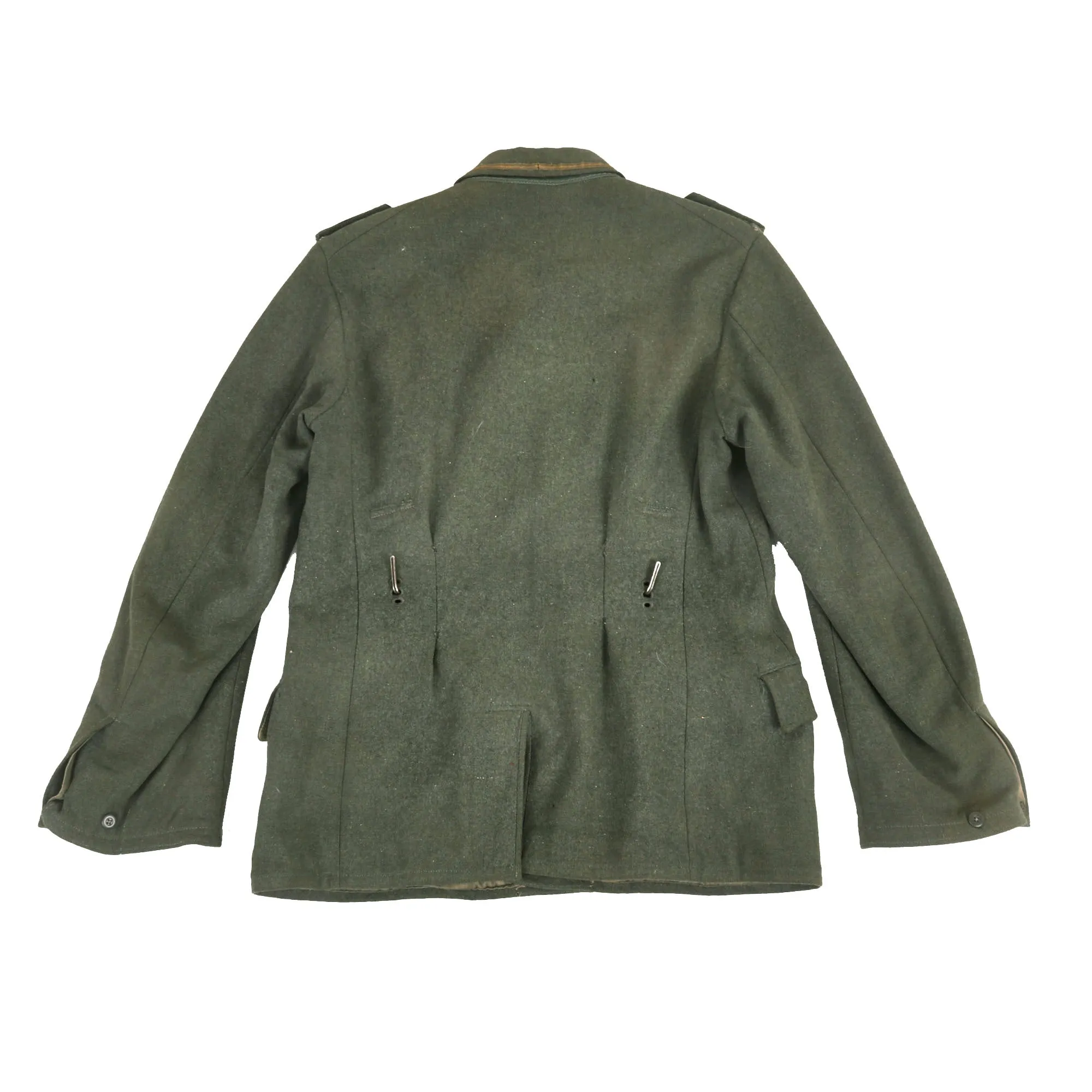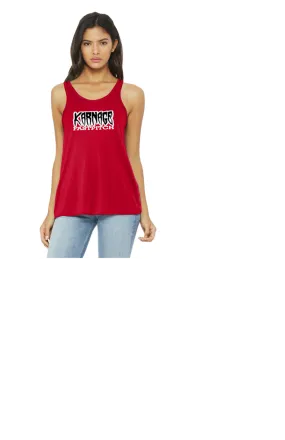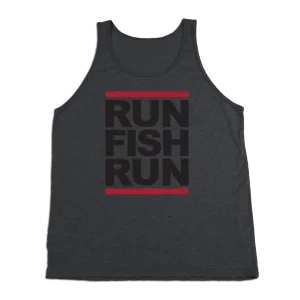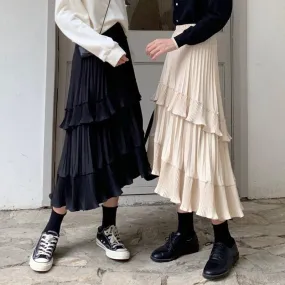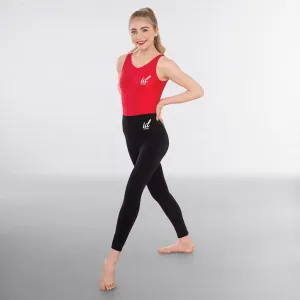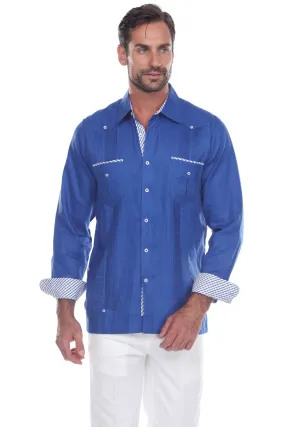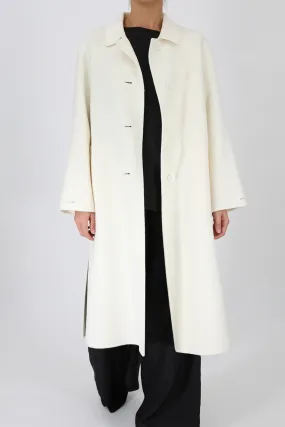Original Item: Only One Available. This is a great example of a WW2 German Kriegsmarine Navy Küstenartillerie (Coastal Artillery) Maat (Mate or NCO) field uniform tunic. In the Kriegsmarine, Unteroffiziere ohne Portepee (Junior NCOs) were classified as Maate (Junior Petty Officers), while the Unteroffiziere mit Portepee (Senior NCOS) were classified as Feldwebel (High Ranked Petty and Warrant Officers). The specific rank many held would be determined by their career or rating path.
The Feldgrau (Field Gray) uniforms of the Kriegsmarine were almost identical to those used by the Wehrmacht Heer, except for the insignia used. The tunic is made of a medium weight field gray/green wool, and features two pleated breast pockets over two slit waist pockets, all with early style scalloped flaps. It shows moderate wear from use and service, with a bit of staining and discoloration in areas, but no major damage such as large tears or moth holes. There are a few repairs around the collar, which is usually the first place to show wear.
The front closes with five olive green painted non-magnetic buttons bearing the Kriegsmarine Navy Anchor, which are marked on the back and sewn directly to the tunic. The pocket flaps are all retained by identical buttons, as are the shoulder insignia, and the buttons do show wear to the painted finish. The attractive machine embroidered gold Naval breast eagle has the correct dark blue green background, and is machine stitched to the chest in a fashion typical of wartime German tailor work. The collar braid insignia (litzen) were sewn on by hand, and are correct for Enlisted Men and NCOS, with yellow stripes around a central white stripe. The collar also has a row of 9mm gold NCO tresse around the entire edge.
The button attached field gray Maate Schulterklappen (NCO Shoulder straps) have a row of gold NCO tresse around the edge, but are open at the shoulder ends, indicating the base rank of Maat, or Petty officer, third class. Both straps also show a winged bomb device, indicating that the wearer is a member of the Küstenartillerie (Coastal Artillery) also known as the Marineartillerie (Navy Artillery. The official rate name for these would be Marineartillerist (Navy Artilleryman), with the rank being Marineartilleriemaat (Marine Artillery Petty Officer Third Class).
There are no additional insignia or badges on the tunic, however there are thread loops for a medal bar above the left breast pocket, and there are also four sets of loops on the pocket itself for additional awards. The NCO that owned wore this tunic definitely looks to have been well decorated.
The inside of this Navy tunic is fully lined with olive green twill fabric, which feels like either brushed cotton, or possibly a cotton and rayon blend. The underside of the collar is lined with HBT cotton. The interior still retains the bandage pocket on the lower right, and there are faded maker and size markings on the inner right lining, which we unfortunately cannot read. Definitely some nice history and research potential in this tunic!
Overall a great Coastal Artillery Kriegsmarine NCO Uniform tunic, ready to be outfitted with some medals and displayed!
Approximate Measurements:-
Collar to shoulder: 10"
Shoulder to sleeve: 25”
Shoulder to shoulder: 15.5"
Chest width: 18.5”
Waist: 18.5"
Hip width: 20.5"
Front length: 29"
The Kriegsmarine was the navy of NSDAP Germany from 1935 to 1945. It superseded the Imperial German Navy of the German Empire (1871–1918) and the inter-war Reichsmarine (1919–1935) of the Weimar Republic. The Kriegsmarine was one of three official branches, along with the Heer and the Luftwaffe, of the Wehrmacht, the German armed forces from 1935 to 1945.
In violation of the Treaty of Versailles, the Kriegsmarine grew rapidly during German naval rearmament in the 1930s. The 1919 treaty had limited the size of the German navy and prohibited the building of submarines.
Kriegsmarine ships were deployed to the waters around Spain during the Spanish Civil War (1936–1939) under the guise of enforcing non-intervention, but in reality supported the Nationalists against the Spanish Republicans.
In January 1939, Plan Z, a massive shipbuilding program, was ordered, calling for surface naval parity with the British Royal Navy by 1944. When World War II broke out in September 1939, Plan Z was shelved in favor of a crash building program for submarines (U-boats) instead of capital surface warships, and land and air forces were given priority of strategic resources.
The Commander-in-Chief of the Kriegsmarine (as for all branches of armed forces during the period of absolute NSDAP power) was Adolf H, who exercised his authority through the Oberkommando der Marine ("High Command of the Navy").
The Kriegsmarine's most significant ships were the U-boats, most of which were constructed after Plan Z was abandoned at the beginning of World War II. Wolfpacks were rapidly assembled groups of submarines which attacked British convoys during the first half of the Battle of the Atlantic but this tactic was largely abandoned by May 1943 when U-boat losses mounted. Along with the U-boats, surface commerce raiders (including auxiliary cruisers) were used to disrupt Allied shipping in the early years of the war, the most famous of these being the heavy cruisers Admiral Graf Spee and Admiral Scheer and the battleship Bismarck. However, the adoption of convoy escorts, especially in the Atlantic, greatly reduced the effectiveness of surface commerce raiders against convoys.
Following the end of World War II in 1945, the Kriegsmarine's remaining ships were divided up among the Allied powers and were used for various purposes including minesweeping. Some were loaded with superfluous chemical weapons and scuttled.




